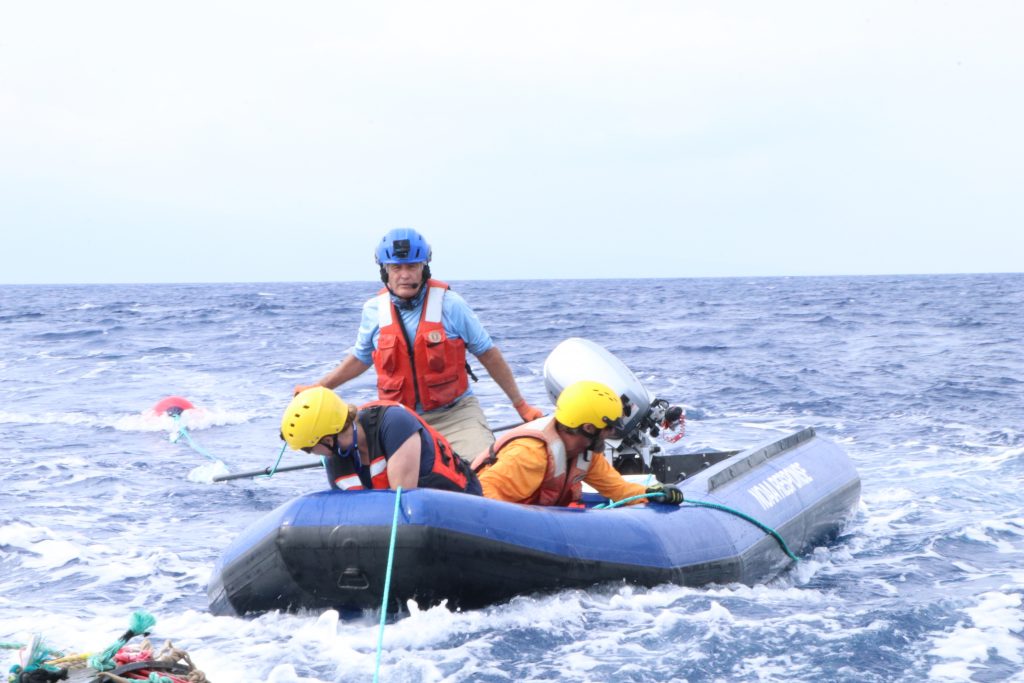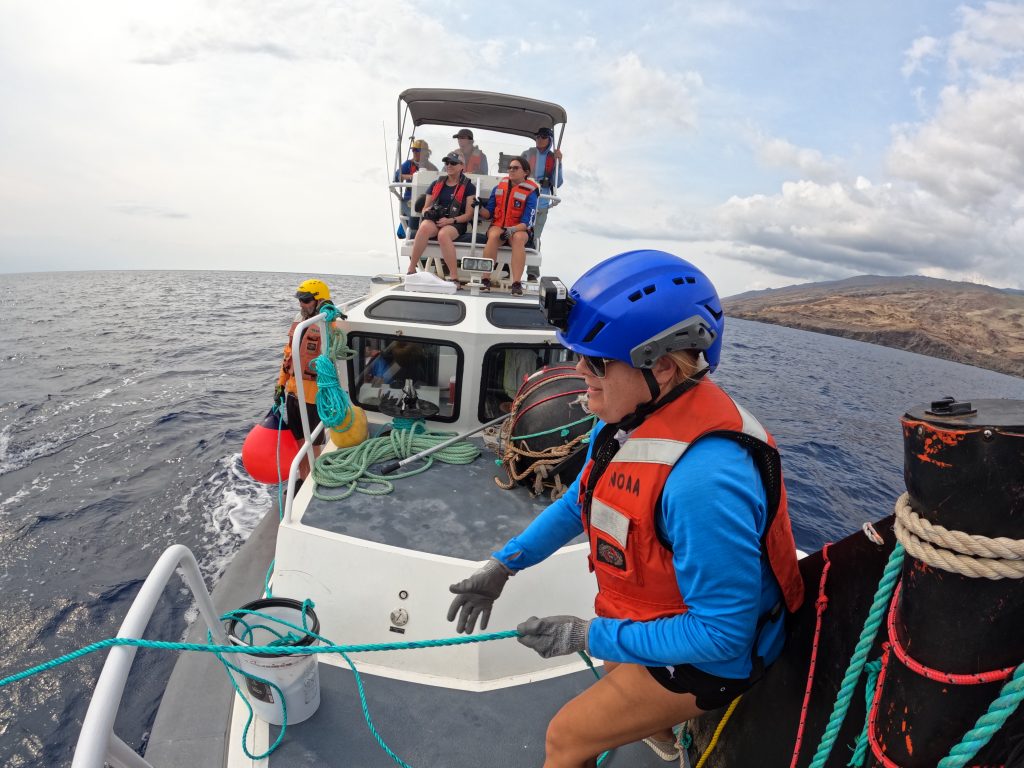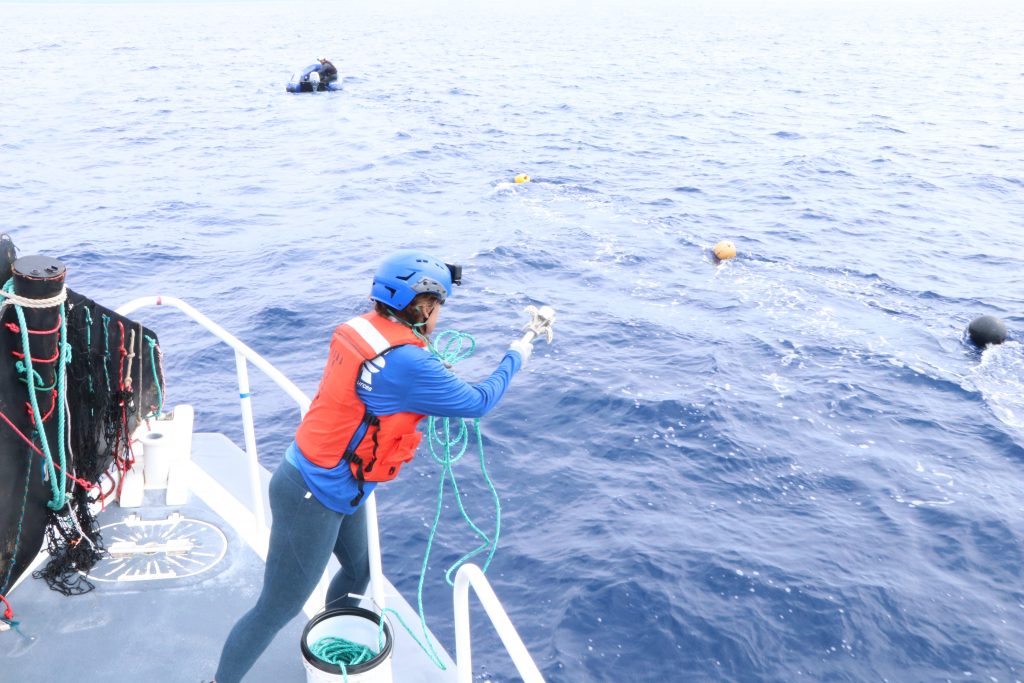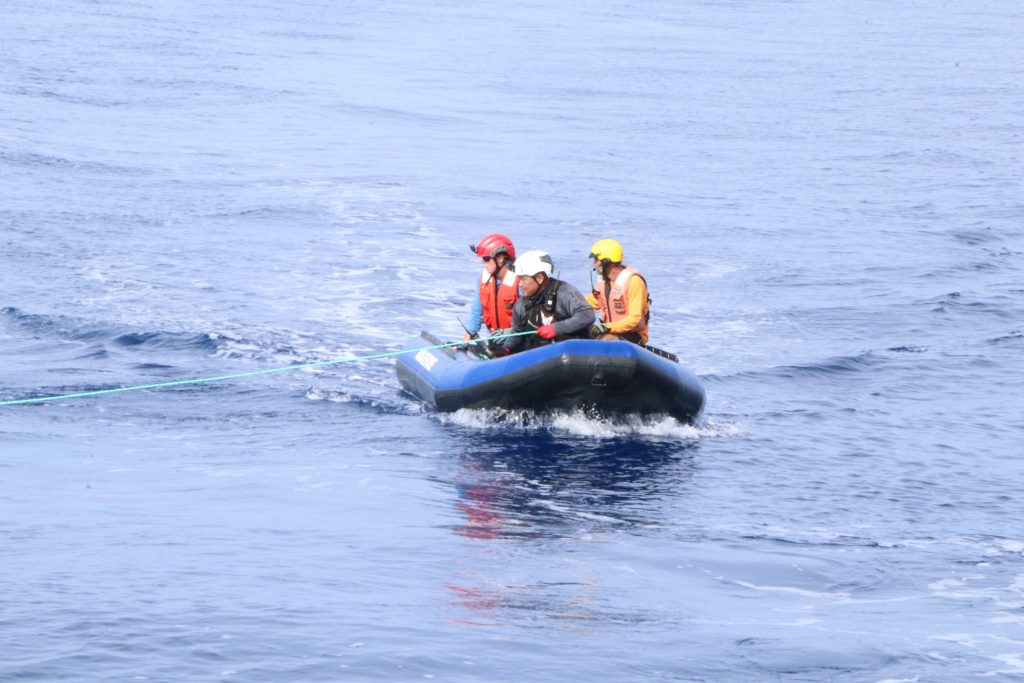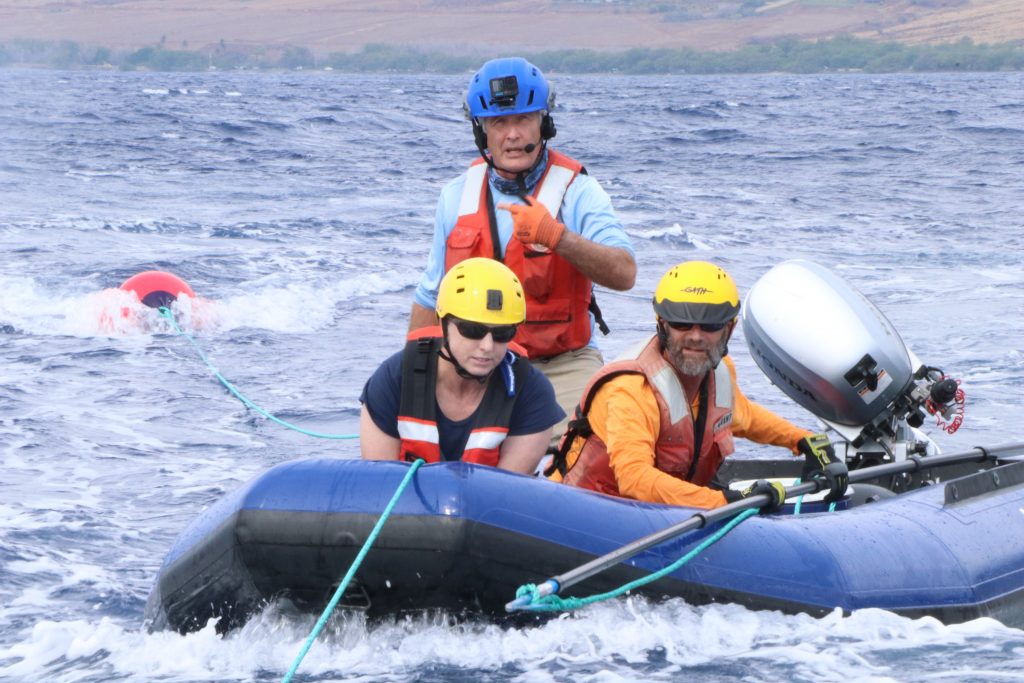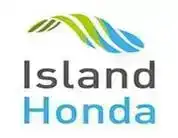Training underway for humpback whale disentanglements

A team of highly-trained state and federal individuals met up in December in waters off of Maui to fine tune their skills in humpback whale disentanglements.
The team gets called out a dozen or more times each season to respond to reports of entangled humpbacks caught in fishing gear or marine debris within the Hawaiian Islands Humpback Whale National Marine Sanctuary. State officials with the Department of Land and Natural Resources say that freeing an entangled humpback can take hours or even days.
The waters are considered breeding and calving grounds for the wintering whales that visit Hawaiʻi each year.
The quicker they receive reports about distressed whales from mariners or people on the shoreline, the faster they can intercept it and begin the “rescue” part of their mission.
“My analogy is we’re looking for a single needle in a stack of needles in a gigantic haystack,” said Chad Yoshinaga, Safety Program Manager at NOAA’s Pacific Islands Science Center in a DLNR press release.
In December, experienced and novice whale disentanglement specialists took to the sea for several days of training to refresh their skills.
Ed Lyman wears several hats for NOAA, but during whale season in Hawai‘i he is the sanctuary’s Regional Large Whale Entanglement Response Coordinator under NOAA’s Marine Mammal Health and Stranding Response Program. He led this season’s training; the first since before the pandemic.
“We’re working around enormous, moving animals, at times in heavy seas and always from moving boats. The safety of our disentanglement teams is paramount. We obviously want to free the whales, but we have to do it without getting anyone hurt,” said Lyman.
“It’s risky business trying to free a 40-ton whale, so you want to deal with the what-ifs. So, one boat is going to approach and work on the whale, while the other one is there to protect all the people involved,” said Lyman.
For training, the bow of the support boat carries a wooden whale tail, draped with various sizes of fishing line. It becomes the stand-in for a live animal to give everyone an opportunity to practice or learn how to throw grappling hooks and cut lines while bouncing around in the waves; all while managing a large knife at the end of a 14-foot or longer pole. It’s not easy work and requires years of practice and experience, according to DLNR.
Whale disentanglement crew members are part of an Incident Command System. Lyman tells DLNR that the ideal number of people to have involved in a disentanglement is eight.
“You need two or three people on the inflatable approach boat and you need a good five on the support boat to address all the roles. A helms person, a crew member, someone doing documentation, a gear person, and a safety officer. That’s someone who is not doing anything but watching the big picture.”
On the approach boat, the team typically includes a bow person watching the animal and holding onto gear, a helm person, and a safety person.
The DLNR Division of Aquatic Resources is the state agency responsible for conserving and protecting all of Hawai‘i’s wildlife. DAR staff often partner with NOAA on whale rescues. For the latest training staff from Kaua‘i, O‘ahu, Maui, and Hawai‘i Island participated.
If you see an injured or entangled marine mammal, keep a safe and legal distance and call the statewide NOAA Marine Wildlife Hotline at 888-256-9840 or the US Coast Guard on VHF channel 16 immediately.
To report a vessel coming too close to a whale, call the NOAA Fisheries Enforcement Hotline at 800-853-1964, email [email protected], or contact your local DOCARE office by phone, email, or on the DLNRTip app, which can be found at https://dlnr.hawaii.gov/blog/2020/07/09/nr20-097/.





